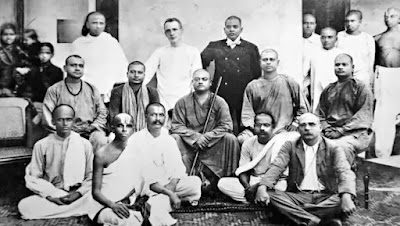(Kannada original: "ಆಳಿದ ಮಹಾಸ್ವಾಮಿಯವರು" - ಸಿ. ಕೆ. ವೆಂಕಟರಾಮಯ್ಯ (೧೯೪೧)(ನಾಲ್ವಡಿ ಕೃಷ್ಣರಾಜ ಒಡೆಯರ್ ರವರ ಜೀವನ ಚರಿತ್ರೆ)

We are pleased to feature a new publication titled "The Monarch of Mysore - His Highness Sri Nalwadi Krishnaraja Wodeyar - A Biography". This is an English translation of the Kannada original titled "Aalida Mahiswamigalu" written in 1941 by C. K. Venkataramaiah. Since the original Kannada publication in 1941, the book had not seen a reprint till date, less so a translation. The Kannada book remains as one of the most definitive biographies of the erstwhile monarch written till date. Now, it's English translation hopes to bring this comprehensive tome to a larger, global audience. The translator - S. Naganath, son of Dr. S. Srikanta Sastri has also translated Dr. S. Srikanta Sastri's much acclaimed Kannada cult classic "Bharatiya Samskruti" into English under the title of "Indian Culture - A Compendium of Indian History, Culture and Heritage" in 2021. The book cover has been designed by renowned photographer and graphic artist S. L. Ravishankar.
%202.JPEG)
This publication, like the earlier translation, has been published by Notion Press Publishers Pvt. Ltd, Chennai and is available in Hardcover, Paperback and eBOOK formats across popular online platforms like Amazon, Flipkart and so on. The book runs to about 580 pages and features around 76 black and white photographs chronicling the life and times of HH Nalwadi Krishnaraja Wodeyar IV. Some of the storylines, anecdotes and cross-references sourced from correspondences to and from the monarch shed an unique light on this period in the history of the princely state of Mysore. This monarch's early years, his training in administrative matters under the British appointee Stuart Fraser, his travels, the various decisions he took which later served as the very foundation of the modern state of Mysore (and later Karnataka) offer a rare glimpse into the makings of this well known Maharaja.
We present the blurb from the English translation verbatim, to offer a taste of what the book has to offer:
In 1399 A. D., Sri Yaduraya Wodeyar founded the “Yadu Vamsa” (dynasty). Later many illustrious rulers expanded the Mysore state in four directions.
This biographical work “Aalida Mahaswamigalu” by Rajasevasaktha Padmasri C. K. Venkataramaiah traces the ebb and tide of history of Mysore. The British Government decided upon restitution of monarchy by appointing Sri Chamarajendra Wodeyar as the successor to Sri Mummadi Krishnaraja Wodeyar in 1881. This enlightened Western educated ruler began modernisation of Mysore through administrative reforms. This fruitful thirteen years reign came to an end by his untimely death.
Sri Nalwadi Krishnaraja Wodeyar aged ten years was appointed as the next successor to the throne by Queen-Empress Victoria. The mother of the young Prince was appointed as the caretaker regent of the Mysore state. The Queen Dowager Sri Vanivilasa Sannidhana Kempananjammani ruled the state ably and efficiently for eight years (1895 – 1902).
After the investiture ceremony in 1902 by Lord Curzon the glorious golden direct rule of Nalwadi Krishnaraja Wodeyar dawned. The Maharaja began modernising the Mysore state through political and economic reforms. The establishment of University of Mysore, Shivana Samudra Hydro-Electric Project, Bhadravathi Iron and Steel factory, KRS dam across river Cauvery, Chemical Industries, Sandalwood oil and soaps & detergents factory, Mysore Silk weaving factory etc are some of his achievements.
The Maharaja adhered to the tenets of “Raja Dharma” and the people called him “Raja Rishi”. Mahatma Gandhi described the Mysore state as “Rama Rajya”. He worked diligently for the emancipation of dalits and women. This progressive rule of the Maharaja came to an abrupt end with his sudden death in 1940 (56 years old). His successor Maharaja Sri Jayachamarajendra Wodeyar continued the benevolent rule for seven years (1940 – 1947) and as Raja Pramukh for three years more (1947 – 1950).
This definitive biography of Nalwadi surveys the seventy years of the historic rule of the Mysore Wodeyars in a comprehensive manner.
To find out more, Click here.





%202.JPEG)




